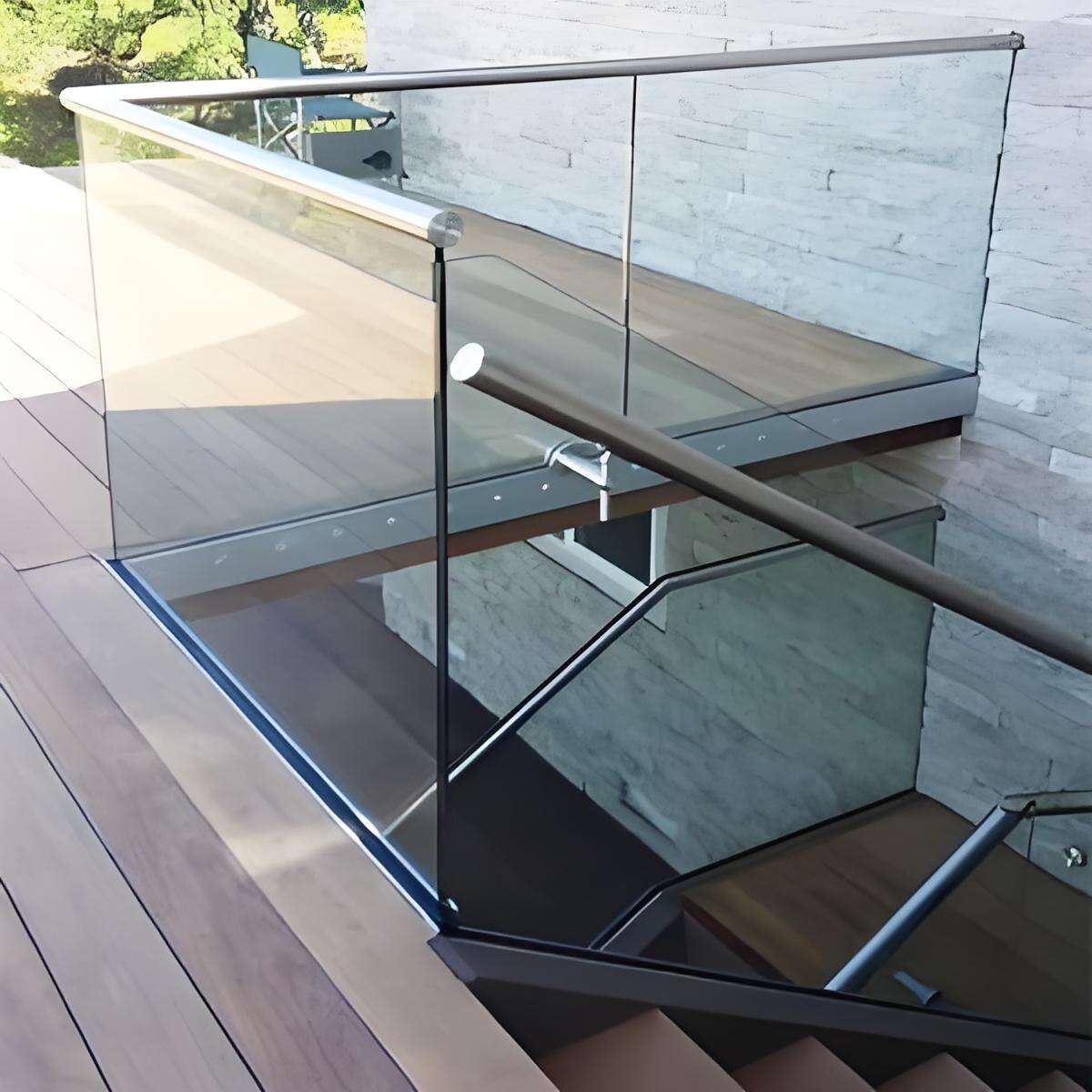Transforming Outdoor Spaces with Modern Glass Elements
The integration of glass railings into landscape design has revolutionized how we perceive and utilize outdoor spaces. These elegant architectural elements offer more than just safety barriers - they serve as stunning design features that can transform any exterior setting into a sophisticated and visually striking environment. From residential gardens to commercial landscapes, glass railings are increasingly becoming the go-to choice for designers seeking to create seamless transitions between different outdoor areas while maintaining unobstructed views.
Design Principles for Outdoor Glass Applications
Balancing Aesthetics with Functionality
When incorporating glass railings into landscape design, the primary consideration is achieving the perfect balance between visual appeal and practical functionality. The transparent nature of glass allows for unrestricted sightlines, making spaces appear larger and more open. This characteristic is particularly valuable in smaller gardens or terraced areas where traditional railings might create visual barriers. The key is to select glass panels that complement the existing architecture while providing necessary safety features.
Modern glass railings come in various finishes and styles, from completely clear to frosted options, allowing designers to create different levels of privacy and visual interest. The mounting systems can be customized to match other architectural elements, ensuring a cohesive design throughout the landscape.
Material Selection and Durability
The success of glass railings in outdoor applications largely depends on selecting the appropriate materials. Tempered or laminated safety glass is essential for exterior use, offering superior strength and resistance to environmental factors. These specially treated glass panels can withstand significant impact and extreme weather conditions, making them ideal for year-round outdoor installation.
The supporting framework, typically made from stainless steel or aluminum, must be equally durable and weather-resistant. Premium quality materials ensure longevity and minimize maintenance requirements, making glass railings a cost-effective long-term investment for landscape projects.

Innovative Applications in Garden Design
Elevated Garden Terraces
One of the most striking applications of glass railings is in terraced garden designs. By installing transparent barriers along different levels, designers can create a floating effect that enhances the visual flow between spaces. This approach is particularly effective in sloped gardens where multiple tiers can be connected seamlessly, allowing plants and hardscape elements to take center stage without visual interruption.
Glass railings also provide wind protection for elevated garden areas while maintaining the connection with surrounding landscapes. This dual functionality makes them perfect for rooftop gardens and elevated planting beds where both safety and aesthetics are crucial considerations.
Water Feature Integration
The combination of glass railings with water features creates stunning visual effects. When positioned alongside reflecting pools or waterfalls, glass panels can enhance the play of light and create mesmerizing reflections. Designers often use this technique to add depth and movement to static landscapes, creating dynamic spaces that change throughout the day as light conditions vary.
Safety glass railings are particularly valuable around water features, providing necessary protection while maintaining the serene atmosphere that water elements bring to a landscape. The transparency of glass allows the water feature to remain the focal point while ensuring visitor safety.
Technical Considerations and Installation
Structural Requirements
Proper installation of glass railings in landscape settings requires careful attention to structural requirements. The foundation must be capable of supporting the weight of the glass panels and withstanding environmental forces. This often involves concrete footings or reinforced mounting points that are carefully integrated into the landscape design.
Professional installation ensures that all components are properly aligned and secured, with appropriate spacing for thermal expansion and drainage considerations. The mounting system must be precisely leveled to prevent stress on the glass panels and maintain their aesthetic appeal.
Maintenance and Longevity
While glass railings are relatively low-maintenance, proper care is essential for preserving their appearance and functionality. Regular cleaning with appropriate glass products helps prevent buildup of environmental debris and maintains transparency. The supporting hardware should be periodically inspected and maintained to ensure structural integrity.
Modern glass treatments and coatings can significantly reduce maintenance requirements by repelling water and resisting fingerprints. These protective features make glass railings particularly suitable for high-traffic areas in public landscapes.
Sustainable Design Integration
Environmental Benefits
Glass railings contribute to sustainable landscape design in several ways. Their transparency maximizes natural light penetration, reducing the need for artificial lighting in adjacent spaces. The durability and longevity of modern glass systems mean less frequent replacement and reduced material waste over time.
When combined with strategic planting designs, glass railings can help create microclimates and support local ecosystems by allowing uninterrupted light flow to vegetation. This can be particularly beneficial in urban environments where maximizing green space efficiency is crucial.
Energy Efficiency Considerations
Modern glass railings can be specified with energy-efficient properties, such as solar control coatings that help regulate temperature in adjacent spaces. This is particularly valuable in climate-controlled areas where glass railings interface with indoor environments. The thermal performance of the glass can contribute to overall energy efficiency goals in landscape design.
Frequently Asked Questions
What is the optimal thickness for outdoor glass railings?
The recommended thickness for exterior glass railings typically ranges from 10mm to 12mm for tempered safety glass, depending on the specific application and local building codes. For larger panels or areas with high wind exposure, thicker glass or laminated options may be necessary to ensure structural integrity.
How do glass railings perform in extreme weather conditions?
Modern glass railings are engineered to withstand diverse weather conditions, including high winds, heavy rain, and temperature fluctuations. Tempered and laminated glass options are particularly resistant to thermal stress and impact. However, proper installation and regular maintenance are essential for optimal performance in extreme environments.
Are glass railings suitable for pool areas?
Glass railings are excellent choices for pool areas as they provide necessary safety barriers while maintaining visibility for supervision. The materials used are resistant to pool chemicals and water exposure, and their smooth surfaces are easy to clean. Special consideration should be given to using non-slip treatments on walking surfaces near glass installations.

